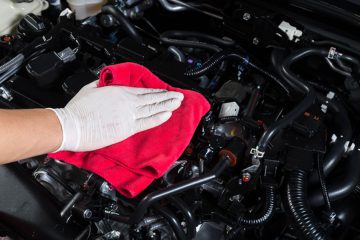Do you know that 90% of all turbocharger failures are due to some unfavorable operating conditions, and problems that are easily avoidable? It is necessary that all of the components are properly installed and maintained, because these units have close tolerances and clearances, and usually operate at high speeds. If you would like to ensure the longest possible service life, always utilize proper operating procedures, and maintain clean air and fresh lubricating oil.
To help you, here are some tips and procedures to prevent the usual causes of turbo failure. As an additional word of caution, always make sure to use these tips in conjunction with the specific recommendations and operating procedures of your vehicle’s manufacturer.
Proper Installation
There are turbo installations that are metal-to-metal fit and require no mounting gaskets. For these, you do not need to use any additional gasket material. Note that at 100,000+ rpm, even a small amount of loose sealant will destroy the compressor wheel. So if the manifold surfaces are damaged, you must repair or replace it.
Then, clean all the connecting hardware and fittings. Also, visually inspect the pipes, hoses or ducting, and replace them as needed. Next, check for adequate oil supply, or if there is enough functioning oil pressure or filter system. The oil supply lines must also be checked because flexible lines can degrade from the inside-out, which can cause the pieces to be flushed down to the new turbo and eventually clog the oil-feed ports. Make sure that the hard lines are not bent, because this will cause the material inside the pipe to loosen and be flushed down the pipe upon start-up and clog the ports.
Next, check the filter elements and screens, and see if your system has a filter screen in the oil supply line. If so, it may not have a bypass feature. So, if the line is blocked, the turbo will be deprived of the oil it needs and swiftly fail. If you have this kind of system, you must have it checked periodically.
Maintenance and Service
As far as care and prevention, you must avoid the penetration of foreign bodies into the turbine or the compressor. Ensure that there is no debris in the air box. Then, air cleaner elements should be replaced or thoroughly cleaned. Also, prevent any dirt from contaminating the oil. Make sure to change oil and oil filters regularly, especially after new turbo installation.
Tips for Operation
Proper use of the vehicle also helps prolong the turbo life of your car. Thus, avoid operating the vehicle for very long periods that are beyond the design performance parameters. These prolonged periods can generate excessive heat, and when you overheat the engine too much, that breaks down the oil and produces high exhaust gas temperatures, which will affect the ignition system and injection system.
Another tip is to avoid hot shut down. This means that if the temperature is high, allow your vehicle to idle and cool down to a lower, normal temperature. Once the engine, its systems and the oil are cooled down, you will prevent the burning or caking of the oil, and these all result to component failure or reduced performance.
Remember that all these tips are or turbo equipped vehicles and applications. If you would like to purchase high quality car components online with great discounts, check out autopartsway.com.


